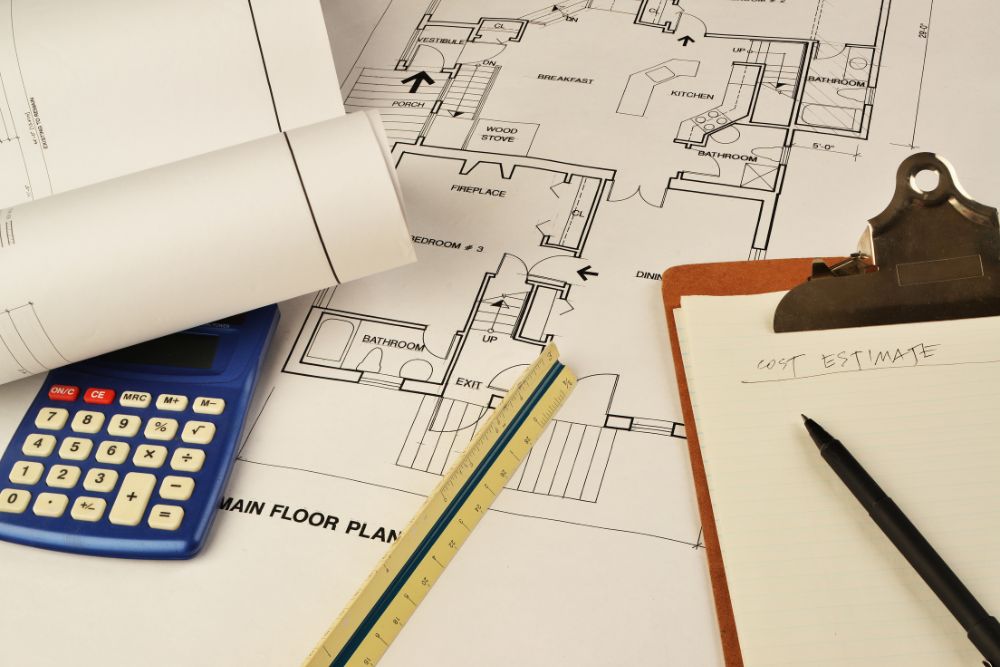Ever started a construction project and thought, “Why is this costing so much?”
Studies show that around 85% of U.S. construction projects go over budget, with many exceeding costs by 28% or more. Large projects can even go 80% over budget and take longer than planned.
How can you stay in control and avoid surprises? Elemental Cost Analysis (ECA) is the answer. By breaking a project into key parts, like foundations, walls, roofs, and building systems, and estimating each part separately, ECA gives you a clear picture of where your money goes.
In this article, we’ll explain ECA’s functions and benefits step by step and provide practical applications for keeping your construction project on budget and on track.
What is Elemental Cost Analysis?
Elemental Cost Analysis (ECA) is a construction approach that breaks down a project into principal components, such as the foundation, walls, floors, roof, finishes, and services, including plumbing and electrical. These components are individually estimated and provide a proper perspective on how the costs are split throughout the project.
ECA assists contractors, planners, and clients in identifying how money is being expended, planning more effectively, and making wise decisions early on. It is also much easier to compare the cost to past projects and find areas where it is possible to save money.

Benefits of Elemental Cost Analysis in Construction
Elemental Cost Analysis has many benefits for construction projects. It clearly identifies costs, helps plan budgets, and reduces the chance of overspending.
Here are the benefits:
- Clear Cost Structure: The costs are presented in simple sections.
- Early Budgeting: Assists in planning the budget early.
- Design Evaluation: Lets you check designs and save money.
- Supports Value Engineering: Helps pick cheaper options without lowering quality.
- Benchmarking: This will enable you to compare the cost with the other projects.
- Improved Communication: Makes understanding costs easier for clients and contractors.
- Cuts Unnecessary Expenses: Assists in preventing unnecessary expenses and being within budget.
Key Elements in Elemental Cost Analysis
The important thing in managing costs is to break a construction project into smaller parts. It assists the planners and contractors in monitoring their expenditures, managing the budget, and make improved decisions. The main elements are:
- Materials: All the required physical materials, which include the bricks, cement, lumber, and concrete.
- Equipment: This contains all equipment and machinery needed for the project, as well as the cost of renting or using it.
- Overhead Cost: Includes unplanned costs, uncertainties, and an amount set aside to cover emergency cases or other unplanned scenarios.
- Labor: It includes the labor expenses of all laborers at various construction phases, such as electricians, plumbers, and mechanics, including their hourly wages and skills.
- Subcontractors: This contains the cost of outsourcing expert contractors to perform specific activities, e.g., electrical, plumbing, and carpentry work.
Elemental Cost Analysis Methodologies
Elemental cost analysis has three primary cost-calculation methods:
- Bottom-up: This method determines the cost of each aspect separately and then sums them to obtain the project cost. It is the most accurate approach.
- Top-Down: This method is used when the project’s overall cost is estimated initially, and then the various elements are estimated as additional information is known. The approach is not as precise and can cause mistakes.
- Hybrid: This is a combination of Bottom-Up and Top-Down approaches. It applies to small-scale projects, requires more attention to detail, and generally estimates large areas.
How Elemental Cost Analysis Works
Elemental Cost Analysis breaks a construction project into simple steps to make costs easy to understand. Each part is measured, priced, and reviewed to help stay on budget and make smart decisions. Here is how it works:
- Data Collection: Gather all project drawings, specifications, and design details.
- Element Breakdown: Divide the project into standard building parts for easier cost tracking.
- Measurement & Quantification: Calculate the quantities of materials, labor, and equipment for each part.
- Cost Assignment: Apply current rates or benchmarks to estimate costs for each element.
- Comparison: Check costs against past projects or industry standards to ensure accuracy.
- Reporting: Prepare a clear Elemental Cost Plan for review and planning.
- Revision & Updates: Adjust the plan as designs change or market prices fluctuate.
Integration of Tools and Techniques in Elemental Cost Analysis
Using the right tools can make Elemental Cost Analysis faster and more accurate. Here are some valuable tools for ECA:
- BIM: Helps calculate materials, labor, and equipment costs accurately.
- PlanSwift: Has a simple interface and makes construction cost calculations quick and efficient.
- CostX: Measures exact dimensions from the project drawings to help estimate costs correctly.

Pros and Cons of Elemental Cost Analysis
When considering Elemental Cost Analysis, it’s helpful to look at its main advantages and disadvantages to understand when and how it works best:
| Pros | Cons |
| Improves cost accuracy by dividing the project into smaller parts. | Depends heavily on accurate data; errors affect the final budget. |
| Helps project managers and contractors plan better. | Hard to convince some stakeholders to follow this method. |
| Gives a clear idea of subcontractors’ budgets and allows confident bidding. | Not very useful for small projects. |
| Early cost analysis supports better decisions and budget control. | Breaking costs into broad elements can miss small details that matter later. |
| Allows contractors to assign a specific budget to each section of the project. |
Practical Applications of Elemental Cost Analysis
Elemental Cost Analysis isn’t just for construction. It can be used in many industries. By breaking projects into smaller parts and estimating each cost, organizations can plan budgets, control spending, and make smarter decisions.
Practical applications of Elemental Cost Analysis:
1. Construction:
In construction, ECA splits costs into materials, labor, and equipment. This helps managers plan budgets correctly and prevent overspending.
2. Engineering:
Engineers use ECA to manage costs in complex projects. They separate costs for design, testing, and production, which helps track spending and make better resource decisions.
3. Project Management:
Project managers use ECA to plan and control costs in different types of projects. By dividing a project into smaller parts, they can track expenses more clearly and make smarter decisions.
4. Other Sectors:
ECA is also valuable for healthcare, IT, and education. IT companies can analyze costs for software development or system upgrades. Hospitals can manage expenses for new facilities or equipment. Schools and universities can budget for new programs or building projects.
FAQs
What Is The Elemental Cost Analysis Method?
Elemental Cost Analysis is a construction method in which a project is divided into main parts: foundation, walls, roof, and services. The cost of each part is estimated separately, giving a clear view of where money is spent and helping with budgeting.
How To Calculate Elemental Cost?
Elemental cost is computed by dividing the project into standard elements. Write down the materials, labor, and equipment values for each component and allocate the costs according to current rates. Lastly, all element costs are computed to obtain the project cost.
How To Run An Element Cost Estimate?
To run an element cost estimate, project drawings and specifications must be collected, the project broken down into elements, the quantities calculated, costs applied to each element, and the results examined. The process is done in stages to ensure the budget is followed and the costs are correctly tracked.
What Is The Elemental Analysis Of The Costs Of Building Projects?
Elemental analysis of building costs divides a project into its key elements and approximates the costs of each. It enables contractors and planners to visualize the most costly aspects of the project and what can be saved or changed.
What Are The Three Major Elements Of Cost?
Materials, labor, and equipment are the three essential cost components. These are the physical objects, manpower, and machinery or equipment required to finish a construction project.
Conclusion
Elemental Cost Analysis is a smart way to manage construction costs. Splitting a project into smaller components, such as materials, labor, equipment, and services, shows how money is expended. This will assist contractors, planners, and clients in better planning budgets and preventing budget surprises.
ECA can be applied in construction, engineering, IT, healthcare, and educational projects. It enables teams to monitor spending, make wise decisions, and know where to save without sacrificing quality. ECA allows projects to be on time, minimize risks, and control finances.
For accurate, detailed, and reliable cost estimation, contact Prime Estimation today. Our team will ensure you plan budgets efficiently and keep your projects on track and within budget.












